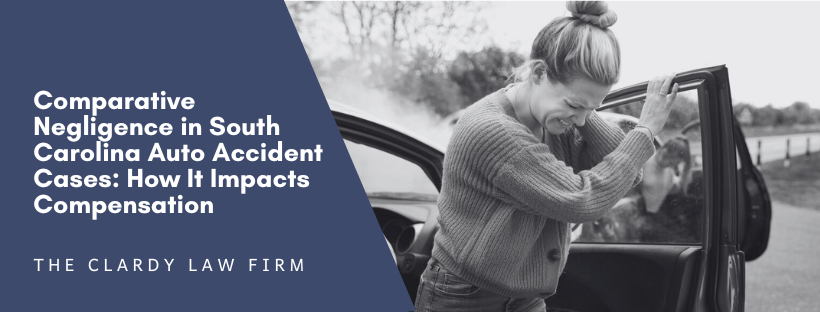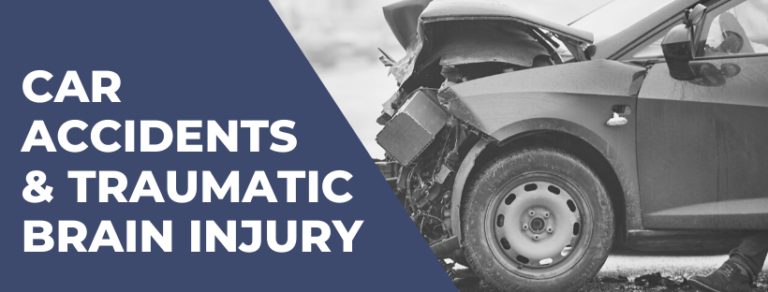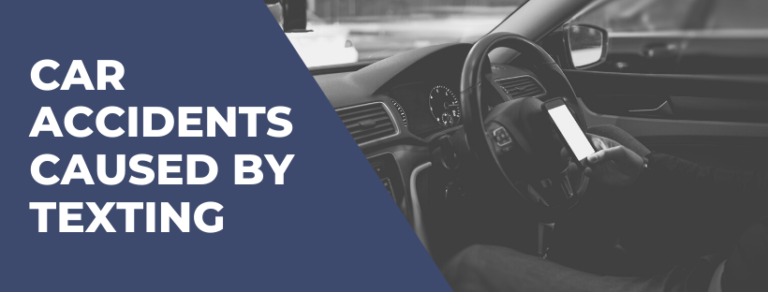Auto accidents are a common occurrence on South Carolina’s roads, often leading to complex legal disputes and significant financial consequences. When an accident happens, determining who is at fault plays a crucial role in deciding how compensation is awarded. This is where the concept of comparative negligence comes into play. Understanding how comparative negligence works in South Carolina is essential for anyone involved in an auto accident, as it directly affects the compensation you can receive.
In this article, we’ll delve into the specifics of South Carolina’s comparative negligence laws, explain how fault is determined, and explore how this impacts the amount of compensation you may be entitled to. Whether you’re a driver, passenger, or pedestrian, gaining insight into these legal principles can help you navigate the aftermath of an accident more effectively and ensure you receive fair treatment.
What Is Comparative Negligence?
Comparative negligence is a legal doctrine used to allocate fault among parties involved in an accident based on the degree of responsibility each party bears for the incident. Unlike contributory negligence, which can completely bar a plaintiff from recovering any damages if they are found to be even slightly at fault, comparative negligence allows for a more balanced and fair approach to assigning liability and awarding compensation.
Under comparative negligence, the fault for an accident is divided into percentages. Each party’s share of the blame is determined based on the evidence and circumstances surrounding the accident. For example, if a driver runs a red light and collides with another vehicle that is speeding, both drivers may share some portion of the fault. The driver who ran the red light might be found 70% at fault, while the speeding driver might be found 30% at fault.
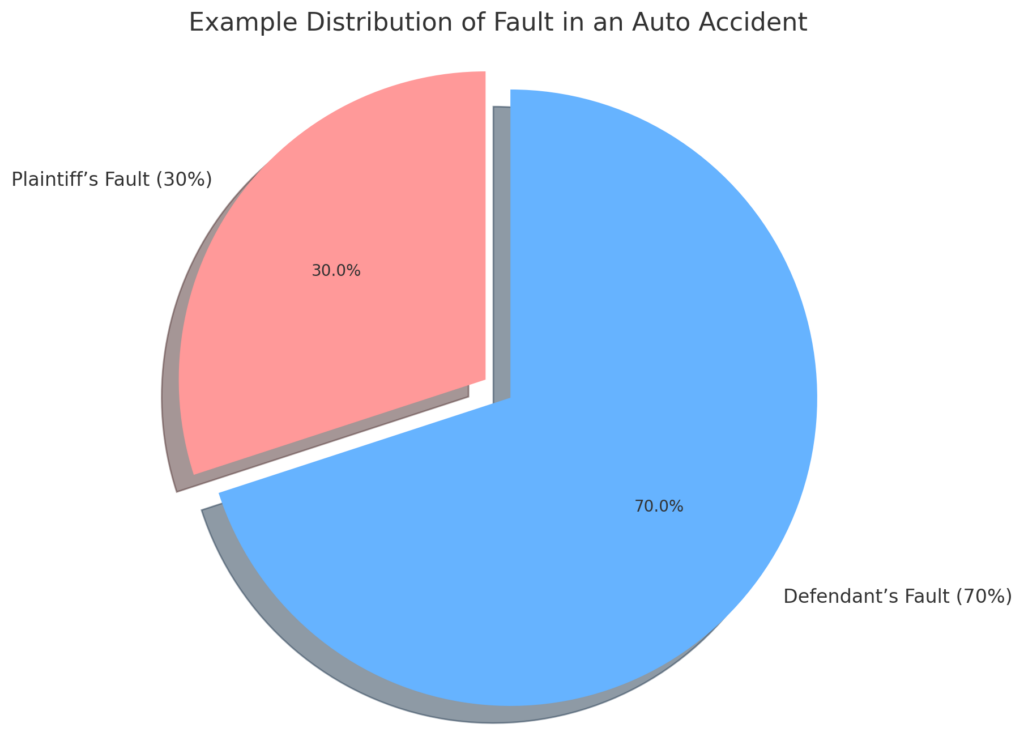
There are different types of comparative negligence systems used across various states, but the two most common are:
- Pure comparative negligence: In this system, an injured party can recover damages even if they are 99% at fault. However, their compensation is reduced by their percentage of fault. For instance, if they are awarded $100,000 in damages but found 40% at fault, they would receive $60,000.
- Modified comparative negligence: This system, which South Carolina follows, allows an injured party to recover damages only if they are less than 51% at fault. If they are found to be 51% or more at fault, they are barred from recovering any compensation. If their fault is less than 51%, their compensation is reduced by their percentage of fault. For example, if an injured party is found to be 30% at fault and is awarded $100,000 in damages, they would receive $70,000.
By understanding comparative negligence, individuals involved in auto accidents can better grasp how fault is assigned and how it affects their ability to receive compensation.
Comparative Negligence Law in South Carolina
South Carolina adheres to a modified comparative negligence system, specifically following the “51% rule.” This legal framework allows for a fairer distribution of fault among all parties involved in an auto accident, ensuring that each party’s compensation is adjusted according to their degree of responsibility for the incident.
The 51% Rule
Under South Carolina’s modified comparative negligence law, an injured party can seek compensation for their damages if they are not more than 50% at fault for the accident. If they are found to be 51% or more at fault, they are barred from recovering any damages. This rule is designed to prevent parties primarily responsible for an accident from benefiting from their own negligence.
How Comparative Negligence Affects Compensation
Comparative negligence is critical in determining the compensation an injured party can receive following an auto accident in South Carolina. The amount of compensation is directly influenced by the injured party’s degree of fault in causing the accident. Here’s a detailed look at how this process works:
Determining the Percentage of Fault
The first step in applying comparative negligence is determining the percentage of fault assigned to each party involved in the accident. This determination is based on a thorough investigation of the circumstances, which includes:
- Police reports: Official documentation that provides initial findings and observations at the scene.
- Witness statements: Accounts from people who saw the accident, providing additional perspectives on how it occurred.
- Traffic camera footage: Video evidence that can clarify the sequence of events.
- Expert testimony: Input from accident reconstruction specialists who can analyze the physical evidence and provide professional opinions on the causes of the accident.
Each piece of evidence helps to paint a complete picture of the accident, allowing for an accurate assessment of fault.
Calculating Compensation Based on Fault Percentage
Once fault has been determined, the next step is to calculate the compensation owed to the injured party. This involves two key calculations:
- Assessing total damages: Calculate the total amount of damages the injured party has suffered. This includes economic damages (such as medical bills, lost wages, and property damage) and non-economic damages (such as pain and suffering and emotional distress).
- Applying the fault percentage: Reduce the total damages by the injured party’s percentage of fault. This adjusted figure represents the final compensation amount.
For example, if an injured party incurs $200,000 in total damages but is found to be 25% at fault, their compensation would be reduced by 25%, resulting in a final award of $150,000.
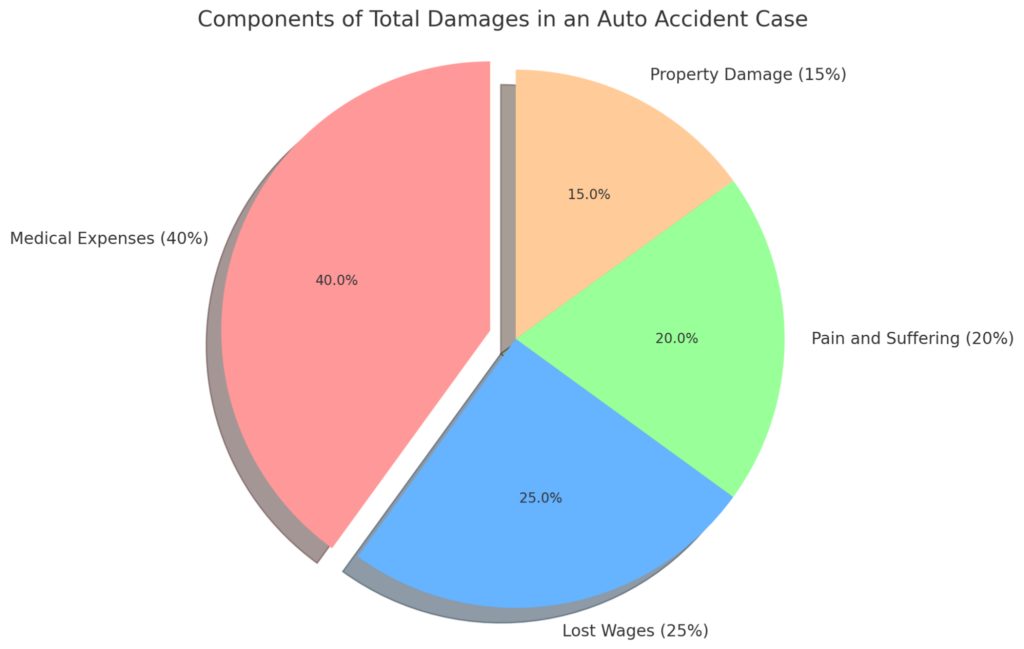
Examples of Compensation Adjustments
To illustrate how comparative negligence affects compensation, consider the following scenarios:
Scenario 1: Driver A and Driver B are involved in an accident. Driver A is found to be 60% at fault, and Driver B is 40% at fault. If Driver B’s total damages are $100,000, they would receive $60,000 after a 40% reduction.
Scenario 2: Pedestrian C is hit by Driver D. Pedestrian C is found to be 10% at fault for jaywalking, while Driver D is 90% at fault. If Pedestrian C’s total damages are $50,000, they would receive $45,000 after a 10% reduction.
In South Carolina, if the injured party’s fault does not exceed 50%, they are entitled to compensation, albeit reduced by their fault percentage. However, if their fault is 51% or higher, they are barred from receiving any compensation.
Proving Fault in Auto Accident Cases
Proving fault in auto accident cases is essential for determining liability and securing compensation for the injured party’s damages. Successfully establishing fault requires a comprehensive approach that involves gathering and presenting compelling evidence to support the injured party’s claims. Here’s a breakdown of the steps involved in proving fault:
Gathering Evidence
- Police reports: Obtain a copy of the police report filed at the scene of the accident. This document contains important details such as statements from the involved parties, witnesses, and the officer’s initial assessment of the accident.
- Witness statements: Collect statements from witnesses who observed the accident. Their testimonies can provide valuable insights into how the accident occurred and who may be at fault.
- Photographic evidence: Take photographs of the accident scene, vehicle damage, skid marks, traffic signs, and any other relevant factors. Visual evidence can help recreate the sequence of events and support your version of the accident.
- Medical records: Gather medical records documenting the injuries sustained in the accident. These records serve as evidence of the extent and severity of the injuries, linking them directly to the accident.
- Expert testimony: Consult with accident reconstruction experts or other relevant specialists who can analyze the evidence and provide professional opinions on factors such as vehicle speeds, braking distances, and driver behavior.
Establishing Negligence
- Duty of care: Show that the at-fault party owed a duty of care to others on the road, such as following traffic laws and driving safely.
- Breach of duty: Demonstrate that the at-fault party breached their duty of care through negligent actions or omissions, such as speeding, distracted driving, or running a red light.
- Causation: Establish a direct link between the at-fault party’s negligent conduct and the injuries sustained by the injured party. This requires demonstrating that the accident was the proximate cause of the injuries.
- Damages: Provide evidence of the damages suffered by the injured party as a result of the accident, including medical bills, lost wages, property damage, and pain and suffering.
Documentation and Preservation
- Preserve evidence: Ensure that all evidence related to the accident, including vehicle damage, medical records, and witness statements, is preserved and properly documented.
- Timely reporting: Report the accident to the relevant authorities and insurance companies promptly. Delayed reporting may raise questions about the validity of your claim.
- Document communication: Keep records of all communication with insurance adjusters, medical providers, and legal representatives involved in the case.
Legal Representation
- Consultation with an attorney: Seek guidance from an experienced personal injury attorney who can assess the strength of your case, navigate the legal process, and advocate on your behalf.
- Negotiation and litigation: Your attorney will negotiate with insurance companies to reach a fair settlement. If a settlement cannot be reached, they will represent you in court and present your case before a judge or jury.
Successfully proving fault in an auto accident case requires diligence, attention to detail, and a skilled legal professional.
Related: How Long After an Accident Can You File a Claim?
Common Scenarios of Comparative Negligence
In auto accidents, comparative negligence often arises in various scenarios where multiple factors contribute to the collision. Understanding these common scenarios can shed light on how fault is determined and compensation is adjusted. Here are some typical situations where comparative negligence comes into play:
Rear-End Collisions
Scenario: Driver A stops abruptly at a red light, and Driver B, following too closely, rear-ends Driver A.
Comparative Negligence: While Driver B is at fault for following too closely and rear-ending Driver A, factors such as sudden lane changes or brake malfunctions could shift partial blame to Driver A.
Impact: If Driver A’s brake lights were malfunctioning or if they suddenly changed lanes without signaling, they may be assigned a percentage of fault, reducing their compensation accordingly.
Intersection Accidents
Scenario: Driver C fails to yield the right of way and collides with Driver D, who was speeding through the intersection.
Comparative Negligence: Both drivers may share fault in this scenario. Driver C’s failure to yield constitutes negligence, but Driver D’s speeding may exacerbate the collision or limit their ability to avoid it.
Impact: Depending on the degree of fault assigned to each driver, their compensation may be adjusted accordingly. If Driver D’s speeding is deemed a significant factor, their compensation may be reduced due to comparative negligence.
Multi-Vehicle Pile-Ups
Scenario: A chain-reaction collision occurs on a highway involving multiple vehicles. Driver E stops suddenly due to an obstacle, leading to a series of rear-end collisions behind them.
Comparative Negligence: Determining fault in multi-vehicle accidents can be complex. While the initial obstacle or action by Driver E may trigger the collision, subsequent drivers’ reactions and following distances also play a role.
Impact: Each driver’s actions and reactions are scrutinized to determine their share of fault. Drivers who were following too closely or failed to react appropriately may be assigned a percentage of fault, impacting their compensation.
In each situation, various factors contribute to the collision, requiring careful analysis to assign fault accurately.
Legal Strategies for Maximizing Compensation
When pursuing compensation for injuries sustained in an auto accident, employing effective legal strategies is crucial for maximizing the amount of compensation you receive. Here are some key strategies to consider:
1. Early Legal Representation
Benefits: Seek legal representation as soon as possible after the accident to protect your rights and ensure that crucial evidence is preserved. An experienced attorney can guide you through the legal process, handle communications with insurance companies, and advocate for your best interests.
2. Thorough Documentation
Benefits: Documenting the details of the accident, including photographs of the scene, vehicle damage, and injuries, strengthens your case. Keep records of medical bills, repair estimates, and any other expenses incurred as a result of the accident. This documentation provides evidence of the damages you have suffered and supports your compensation claim.
3. Evidence Collection
Benefits: Gather all available evidence related to the accident, including police reports, witness statements, and surveillance footage. Accident reconstruction experts may be employed to analyze the evidence and provide professional opinions on the cause of the accident and the extent of your injuries. This evidence strengthens your case and helps establish liability.
4. Establishing Liability
Benefits: Proving the other party’s negligence is essential for securing compensation. Your attorney will investigate the circumstances of the accident to establish liability, demonstrating how the other party’s actions or omissions led to the collision and your injuries. By clearly establishing liability, you strengthen your position in negotiations and increase the likelihood of obtaining a favorable settlement or court verdict.
5. Negotiation Skills
Benefits: Skilled negotiation is critical for maximizing compensation in auto accident cases. Your attorney will engage in negotiations with the insurance company or the at-fault party’s legal representatives to secure a fair settlement. They will leverage the evidence gathered and advocate aggressively on your behalf to achieve the best possible outcome.
6. Pursuing Full Compensation
Benefits: Ensure that all your damages are accounted for when seeking compensation. In addition to economic damages such as medical expenses and lost wages, consider non-economic damages such as pain and suffering, emotional distress, and loss of enjoyment of life. Your attorney will pursue full compensation for all your losses, ensuring that you are fairly compensated for the impact the accident has had on your life.
7. Litigation when Necessary
Benefits: If negotiations fail to result in a satisfactory settlement, litigation may be necessary to pursue your claim in court. Your attorney will represent you in court proceedings, presenting your case before a judge or jury and advocating for your rights. Litigation can result in a favorable verdict and ensure you receive the compensation you deserve.
A skilled personal injury attorney will guide you through the process, advocating tirelessly on your behalf to ensure your rights are protected and you receive the compensation you deserve.
Related: Personal Injury Settlement: How Much Can You Expect?
The Role of a Personal Injury Attorney
In the aftermath of an auto accident, enlisting the services of a skilled personal injury attorney is essential for protecting your rights, navigating the legal complexities, and maximizing your compensation. Here’s how a personal injury attorney can assist you throughout the process:
1. Legal Guidance
Benefits: A personal injury attorney possesses knowledge of personal injury laws, insurance regulations, and legal procedures. They will provide you with guidance, explaining your rights, options, and the legal process involved in pursuing compensation for your injuries.
2. Investigation and Evidence Collection
Benefits: Your attorney will conduct a thorough investigation into the circumstances of the accident, gathering crucial evidence to support your claim. This may include obtaining police reports, interviewing witnesses, collecting medical records, and consulting with accident reconstruction experts. By meticulously collecting evidence, your attorney strengthens your case and establishes liability.
3. Negotiation with Insurance Companies
Benefits: Dealing with insurance companies can be daunting, but your attorney will handle all communications and negotiations on your behalf. They will work tirelessly to secure a fair settlement that fully compensates you for your injuries, damages, and losses. Your attorney’s negotiation skills and knowledge of insurance tactics are invaluable in achieving a favorable outcome.
4. Maximizing Compensation
Benefits: Your attorney will pursue maximum compensation for all your damages, including medical expenses, lost wages, pain and suffering, and future medical care. They will carefully evaluate the extent of your injuries and losses, ensuring that you receive fair and adequate compensation for the impact the accident has had on your life.
5. Litigation Representation
Benefits: If negotiations with the insurance company fail to result in a satisfactory settlement, your attorney will not hesitate to take your case to court. They will represent you in litigation proceedings, presenting your case before a judge or jury and advocating vigorously for your rights. Your attorney’s trial experience and litigation skills are essential for achieving a favorable verdict.
6. Legal Support and Advocacy
Benefits: Throughout the legal process, your attorney will provide unwavering support, guidance, and advocacy. They will address your concerns, answer your questions, and keep you informed at every step of the way. Your attorney is committed to protecting your best interests and ensuring that you receive the justice and compensation you deserve.
At The Clardy Law Firm, we are committed to advocating for the rights of auto accident victims and helping them navigate the legal process with confidence. If you’ve been injured in an auto accident, don’t hesitate to reach out to us for a consultation. Our experienced team will work tirelessly to ensure you receive the justice and compensation you deserve, allowing you to focus on your recovery and rebuilding your life.

